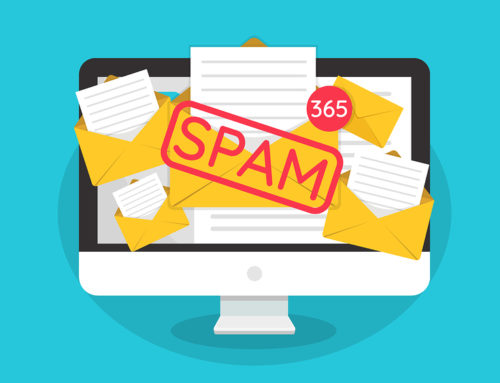 When Marta Lindsey, the communications and development director at TransForm, told me about her experiment to see what she could learn about fundraising from all the charity solicitations that arrived in her mailbox over one year, I immediately asked if she would share the story with you. Here’s Marta’s account of what she learned.
When Marta Lindsey, the communications and development director at TransForm, told me about her experiment to see what she could learn about fundraising from all the charity solicitations that arrived in her mailbox over one year, I immediately asked if she would share the story with you. Here’s Marta’s account of what she learned.
A Guest Post by Marta Lindsey
A little more than a year ago, my mailbox got totally out of control. It was so consistently stuffed with fundraising solicitations that my mailman started leaving magazines on the stoop. The stack of unopened mail in my kitchen was practically a fire hazard.
I’m clearly not the only person getting frustrated by all this mail. Smile Train even designed a solicitation around this idea: “Make one gift now and we’ll never ask for another donation again!”
I felt bad in the three ways: 1) overwhelmed in deciding which organizations to give to; 2) annoyed by the ever-present clutter in the kitchen; and 3) saddened by the sheer number of trees dying for all this mail.
So I decided to do an experiment.
I would save every solicitation I received for an entire year and see what I could learn to apply to the small nonprofit where I’m the communications and development director. Then I would decide which nonprofits to write checks to. And finally, I would contact every organization and ask them to send me just one solicitation per year or take me off their list entirely.
A year later, no wonder I was feeling so overwhelmed: I was hit up by more than 50 organizations in the twelve months of the experiment. Ten of these sent more than five pieces of mail apiece; five others sent me more than 10 pieces of mail apiece! Only 15 were organizations I had ever given to.
Sitting on the living room floor with stacks of mail surrounding me, I quickly learned some small, simple lessons you can apply at your small nonprofit.
Lesson 1: Make Sure Your Gifts and Gimmicks Match Your Mission
I have supported Defenders of Wildlife’s important work to protect the Alaska National Wildlife Refuge for years and will continue to do so. But I’m frustrated by their fundraising appeals.
 Within the yearlong experiment, I received separately three pens encased in a huge piece of plastic so I could “save a wolf with one stroke of my pen.” I also received a corroded metal Christmas tree ornament that was made in China.
Within the yearlong experiment, I received separately three pens encased in a huge piece of plastic so I could “save a wolf with one stroke of my pen.” I also received a corroded metal Christmas tree ornament that was made in China.
I know big organizations like Defenders do this kind of thing because it works – at least well enough – in getting new members, but it seems inappropriate to have this wasteful, non-recyclable junk coming from an environmental organization (and in addition to the eight paper appeals they sent within the same time period). All of these gifts/gimmicks run a serious risk turning off potential donors permanently as much as inspiring them to give.
Where I work, TransForm, we can’t afford to send anything with our mailings. So we applied this lesson to the gifts we give for different donations levels. With our social justice and environmental mission, we decided we simply couldn’t give t-shirts as gifts unless they were organic cotton and made under fair labor practices. This makes them a lot more expensive – which means we can only give the t-shirts at pretty high gift levels ($80+) instead of as incentive for smaller donation amounts. But this was worth it to us to avoid risking our credibility with potential donors.
Tip: Run gifts and gimmicks past a group of program staff and current donors to see if they raise any concerns before purchasing and promoting them.
Lesson 2: Assure Potential Donors Their Name Won’t Be Sold (But Only If It’s True)
Since I had only donated to 15 of the 50 of the nonprofits I was hit up by over the year, it’s pretty obvious some of the organizations I’ve given to are selling my information.
This isn’t an uncommon practice, but if your organization is small, you probably aren’t doing this. And if you aren’t, you should promote this! That’s because for potential donors like me, we are thrilled to learn that donating to an organization won’t mean a ton of solicitations from other nonprofits.
This is such an easy way you can increase donations from solicitation-weary folks like me. But of course, only do this if you have a firm internal policy against sharing or selling contact information.
Tip: Put text on your email subscription, online donation pages, and even on your hard copy return devices letting people know their information is safe with you. We use this language: “We will not sell or share your information. Period.”
Lesson 3: Make It Easy for People to Ask for Less Mail – and Ideally from an Actual Human Being
Once I decided which organizations to write checks to, it was time to contact every organization that solicited me to tell them to either take me off their list or send me just one solicitation a year.
This proved much easier said than done – and taught me another lesson in how small nonprofits can have a competitive advantage in building a more authentic relationship with potential donors.
First, for many organizations it was hard to even find on their websites where to make this kind of request. For large organizations I typically ended up on a generic “Contact Us” form field page after much searching and had to enter all kinds of information to be allowed to submit my request.
But for smaller organizations it was usually much easier: there was typically a staff list where you could quickly find an appropriate membership/development person and email them directly. An actual human being – wow!
The difference between these two communications experiences only became more notable once I got responses.
Check out the terrible response I got from a generic email address at a very large organization when I asked to receive one solicitation per year. The organization’s name has been blocked out to protect the guilty:
“Thank you for contacting the ————-. You may be receiving mail from us because your name appears on mailing lists shared by numerous organizations such as ours. We were unable to find a record for you in our system based on your email address, physical address or name so we cannot reduce the mailings in your record but we will be able to remove you.”
I’m not even sure what this means! But it was so different from the responses I got back from smaller organizations that clearly recognized that contacting me back about this was a valuable communications opportunity with a potential or existing donor.
Check out this polite, personal email from an actual human being I got almost immediately from the Yosemite Conservancy:
“Dear Ms. Lindsey, Thank you for your support of the Yosemite Conservancy. As you requested, I have arranged for you to receive your request for support once a year, in November, when we solicit all donors requesting an annual solicitation. Once again, thank you for your support.”
Providing contact information in appropriate places on your website and solicitations is such a simple way to provide better customer service and put a human face on your work, both of which help people connect with your mission and make them more likely to give.
At TransForm, we put contact info for the appropriate development staff person on our donate page, donation form, and anything else fundraising-related. We also have internal deadlines for how quickly we seek to respond to these types of communications.
Your organization needs to be sure that you’ve made changes to your database so you can track preferences. We have developed tracking for: 1) all postal mail okay; 2) year-end postal appeal only; 3) no postal fundraising; and 4) no postal mail of any kind.
Tip: Put the contact information for the right staff person for fundraising-related questions anywhere it’s appropriate to immediately improve your customer service.
What do you think of Marta’s experiment and her interpretation of the results? Share your thoughts in the comments.
P.S. Some Friendly Reminders . . .
- The “New and Improved Nonprofit Annual Report” webinar is tomorrow, December 8. Includes a free copy of our updated ebook.
- We want to hear your predictions for 2011. Take the survey and get a free copy of our trends report in January.
- The Annual All-Access Pass to our Webinar Series is on sale for $365 until December 31. Get the details and register.






